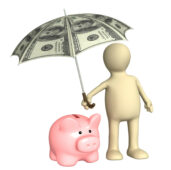During the last couple of years, a brand new variety of mutual fund has become accessible to investors looking for liquidity and reduced costs. These finances, known as exchange-traded funds (ETFs), trade on the major exchanges and act similar to stocks, except that they offer similar diversity and professional management accessible in conventional finances. More than seven hundred different exchange-traded funds are now accessible, and also the quantity is continuing to expand.
ETFs may be useful for traders trying to seize capital losses at year-end. As a hypothetical example, assume that you have stock in a particular technology company. The stock cost has dropped precipitously since you got in, but you feel that this is only temporary. However, you would like to realize a capital loss on the stock while it's trading in its current range. However you must be careful for the 'wash sale' principle as determined by the IRS prohibiting the repurchase of any stock sold for a loss for at least 31 days following the sale. Therefore, a solution could be to sell the stock and purchase shares of the appropriate related exchange-traded technology fund. Even if this fund actually has your former stock as one of its core holdings, it is still regarded as a independent security by the IRS and also the Sec. Thus the wash sale rules won't apply-a nice tax savings. Moreover, you now have diversity within the technology field, while retaining the same assets as before. The proliferation of exchange-traded funds now enables you to realize a loss with one fund and then jump into another if you desire.
And when is it best to sell a stock and purchase the ETF symbolizing the asset type to which the stock belongs? The obvious answer is once you have capital gains or other income and taking a loss would assist shelter that income. A capital loss can be declared against the quantity of any gain received, plus $3,000 of normal income for each year.
Other tax savings that comes together with ETFs is generally low turnover. Simply because most ETFs aim to reproduce an index instead of beat it, the ETF does not have to do a lot of purchasing and selling as many actively managed mutual funds do. A little quantity of buying and selling indicates reduced capital gains and the resulting taxes-another good tax savings of ETFs.
You Pay More Taxes Than Necessary
And we guarantee your CPA has never told you The problem with paying taxes is that most people overpay. So if you are concerned about having enough in retirement, you must stop overpaying taxes. I know you think your CPA takes care of this for you. WRONG. I AM a CPA (retired) and I can tell you that 90% of CPAs do nothing more than enter your information into the little boxes on the tax return but NEVER tell you how to pay less next year. Why? Many of them simply do not know what we can show you. In ten minutes.Get Your Copy Now - 6 Ways to Cut Retirement Taxes





Leave a Reply